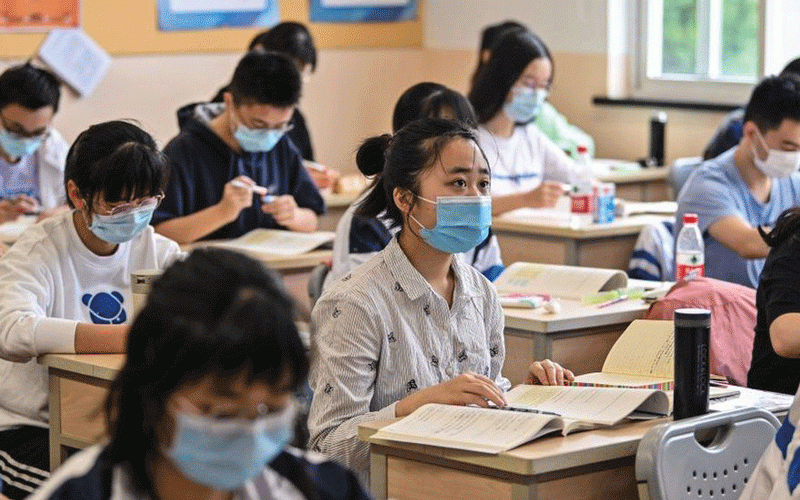
The Chinese Communist Party (CCP) led National Women’s Council held last month in Beijing, in a way reiterated the tragic status of women in the country under its President, Xi Jinping. With the supremo himself leading the discussion, women, once again, were pushed away from centre-stage— an opportunity which could have been utilised for the development and betterment of women in China’s society.
From regressive measures such as the One-child policy to detrimental inequality gaps, the CCP has further restrained women from attaining a status of equality in the country and the Council discussions were but one example of the deteriorating status of women in China’s political landscape.
Women’s representation in Chinese politics and the subsequent scope for women-led policy initiatives has always remained low in the Party’s list of priorities. In almost seventy years since the CCP attained power, the Party has never appointed a woman as a member of its Politburo Standing Committee, the supreme most powerful political body in Chinese politics.
Moreover, only six female members have ever been appointed to the 25-member Politburo since 1949. With a significant majority of China’s political leaders being men, the emphasis for comprehensive development of women is only seen in rhetoric much less so in reality, as evident in the Women’s Council held last month. However, the extent of underrepresentation of women is not only a serious concern within China’s political landscape, but also plagues the country’s other sectors as well.
The state of women in China’s political economy
Within Chinese society, inequalities between both men and women remains high not only in regards to political positions, education, employment, and health, but more so also with other socio-economic factors such as inheritance, salaries, and other determinants.
The expansion of the Chinese economy in the past two decades was expected to reduce the gap in gender inequality given its direct effects on access to basic education. However, on the contrary, latest surveys conducted in China have revealed that access to education does not entirely ensure equality in securing jobs.
From questions relating to family planning to lack of faith in their abilities, women in China have been subjected to various discriminatory practices, even in urban regions. The lack of gender quotas in major sectors of Chinese society has also contributed in further expanding this gap and ensuring discriminatory practices continue.
- Electoral violence looms: ZPP
- Zimbabwe’s 2023 elections: how to judge candidates’ social protection promises
- Letter from America: Is former president Donald Trump a hero or villain?
- Chidzivo, Tarakinyu clinch Kabag honours
Keep Reading
As far as the wage gap is concerned, the substantial margin of difference in China’s wages economy is not only an obstruction to growth of women in the country, but also plays a detrimental role in limiting their participation in work force across various sectors.
A recent study conducted in 2018 revealed that Chinese women earned 22 percent lesser than their male counterparts, indicating the wide gap that persists to date in the country.
This disparity is further revealed when another layer of factors is analysed such as the segregation of work profiles among both men and women in Chinese society. The study also reported that around 50 percent of Chinese women was limited to secretarial positions which generally paid less than other positions such as technology, manufacturing and others.
The CCP’s detrimental policies and Xi Jinping’s conservative stand
Above and over these facets, the One-Child Policy has also had a daunting effect on women’s participation in the country’s economy. Apart from the negative impact on China’s nation building endeavours, the detrimental policy has also reduced the female-to-male ratio to 87:100 at birth, ranking it lowest among other countries from across the world by the World Economic Forum in a recent study it conducted.
Moreover, even though the rate of female participation in the labour force was high through the 1980’s, the percentage has rather dropped further to 68 percent from a strong 80 percent, clearly indicating the withdrawal of women from China’s workforce industries. The CCP through its recently conducted Women’s Council, has moreover also clearly indicated how it envisions women’s role in further expanding China’s global presence.
President Xi’s remarks which encouraged women to explicate ‘traditional family values’ was also intended to indicate the Party’s approach to reverse the damage of a declining demography. Furthermore, during his speech, he pressed for women to take up child-bearing responsibilities for the betterment of the nation and expressed the need for telling good stories of the traditional family systems and the role women play in them.
Thus, by shifting focus away from genuine concerns regarding the status of women in China, the Party and its subsidiaries such as the All-China Women’s Federation have managed to re-enforce the status quo and portrayed any criticism as a direct attack upon the Party’s values. This has not only prevented the development of women taking centre-stage but has on the contrary propelled an increase in the inequality gap persistent in the country.
Such measures are also in direct opposition to China’s Constitution which states that women should enjoy equal political rights to men. Hence, the tragic status of women in China’s political economy is not just based upon the sole actions the top-most leader takes, but it is also the Party-state as a whole that has rallied behind the dilution of women’s rights in the country.







